ADDING ORGANIC SHAPES to a jewelry store is visually appealing, says interior designer Lyn Falk, president of RetailWorks, because humans are attracted to curved lines over hard corners, which might be unconsciously perceived as dangerous, or at least difficult to navigate.
Curves seduce and move customers through a space more easily.
Jesse Balaity, owner of Balaity Property Enhancement, says curving the ends of showcases can provide a little more room for circulation in a compact store, compared to all hard corners.
“For larger stores, I like to create contrast between different zones or moods,” he says. “There may be a bar or watch zone with a squared-off masculine feel. Then, curves in the bridal or diamond fashion areas can provide a contrasting feminine feel.”
Advertisement
Curved custom millwork and showcases are more expensive than straight, especially when they incorporate curved glass. “When budget dictates,” Balaity says, “we can use squared-off glass on top of curved bases or just find curvature in the furniture.”
A couple of tricks of the trade, Falk says, are to simply curve a “facade” around a straight front, or to add curves to end pieces and focal point towers.
“Selecting specific areas to bring in curves will add elegance to the store’s design and help customers glide through the space without breaking the budget,” she says.
Here are a variety of examples of how curves can be used to enhance mood and improve flow in jewelry stores.
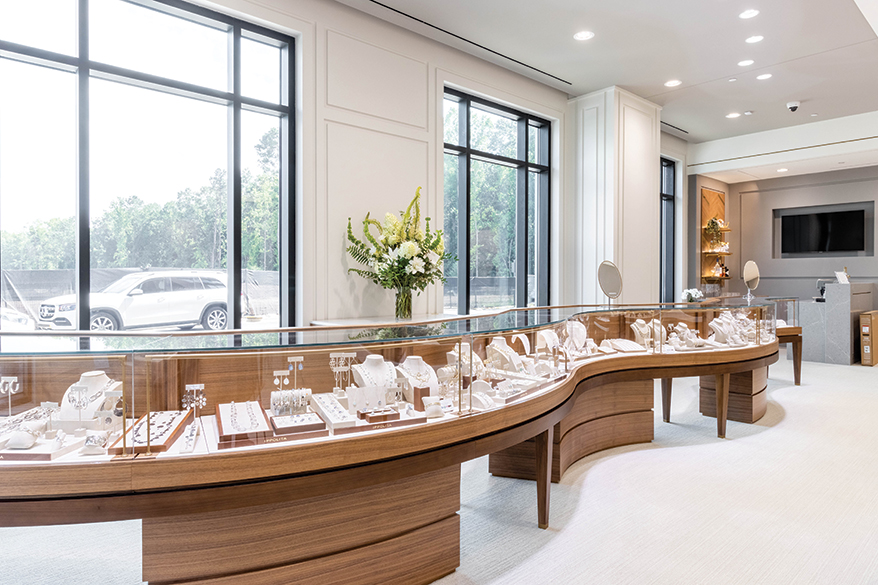
A Highlight
Bailey’s Jewelry in Cary, NC, features a long, curved showcase flooded with natural light for a double dose of organic, visual appeal in the 5,000 square-foot store. Glass display cases are mounted on handcrafted wooden bases. Artco Group designed the showcases and layout.
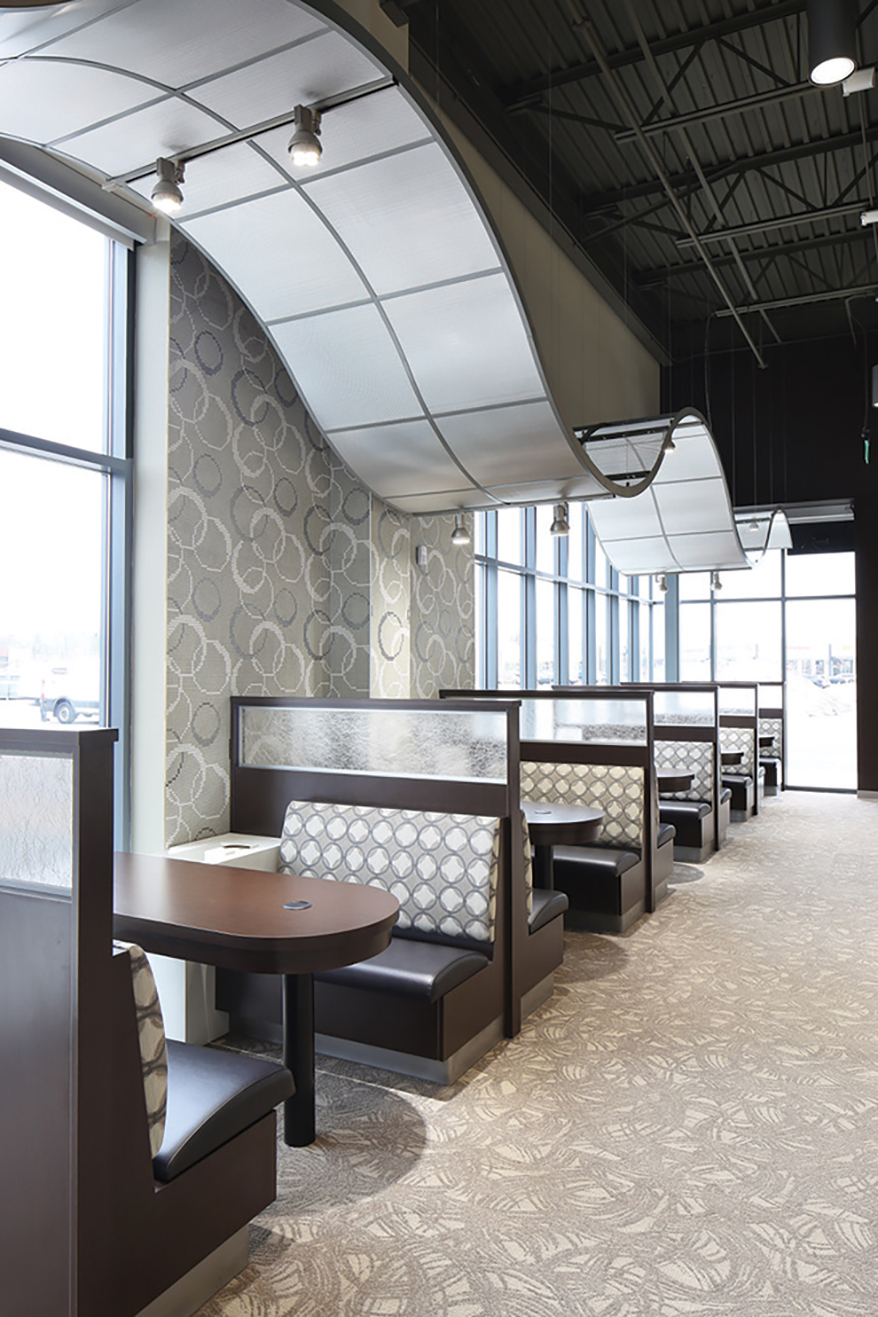
Curving Everywhere
Curves are playful, thought-provoking and just about everywhere at employee-owned Kesslers Diamonds in Grandville, MI. Interior designer Lyn Falk says that in addition to wanting curved cabinetry elements in the space for that added softness and flow factor, the store and design team also opted for curved decorative elements that reflect the shape of circular engagement rings and wedding bands.
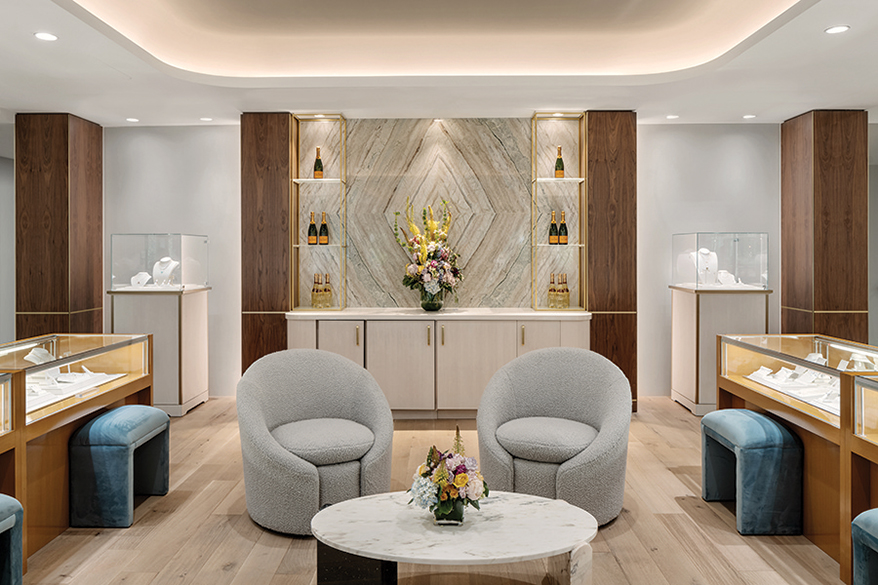
For Comfort
Upstairs at Zadok in Houston, curves in the ceiling and in the furniture make the Champagne bar particularly cozy and welcoming. The goal of the interior design was to create places within the vast, 18,000-square-foot showroom where clients can feel like they are the only ones in the store and where sales associates can chat with a client and not have it be over a showcase. Designed by Michael Hsu Office of Architecture, the store is owned by the Zadok family.
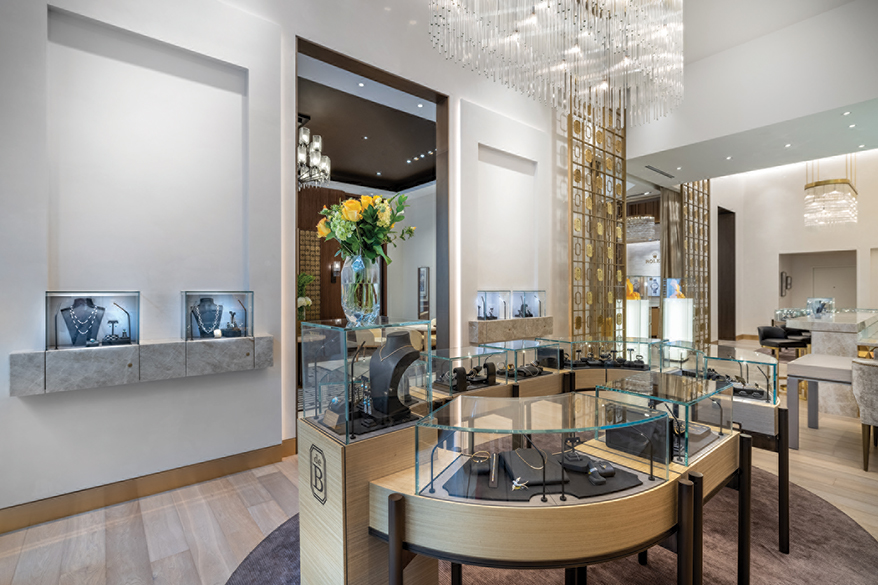
Striking a Balance
At de Boulle in Houston, owned by the Boulle family, strong vertical lines are softened and balanced with strategically placed curved showcases in the 3,500 square-foot showroom. The store, designed by Lucid Architecture, is home to private watch salons for both Rolex and Patek Philippe as well as de Boulle’s jewelry collections.
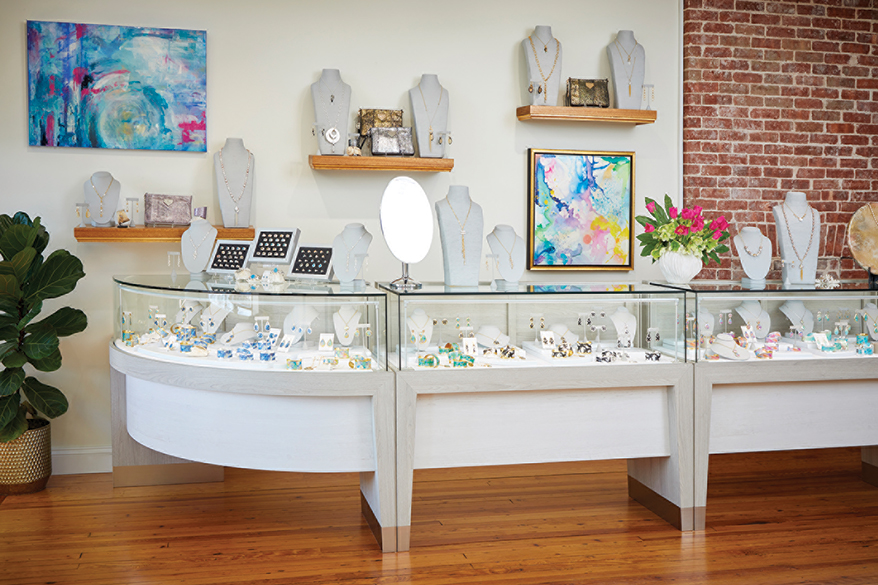
Custom Cases
Custom display cases crafted by Artco Group for Moonrise Jewelry in Cape Charles, VA, reflect its elegant and casual coastal feel, complete with a showcase that ends with a graceful curve. Elsewhere, front-loading cases allow for side-by-side selling in the center of the store while maximizing open space in the narrowest part of the building.
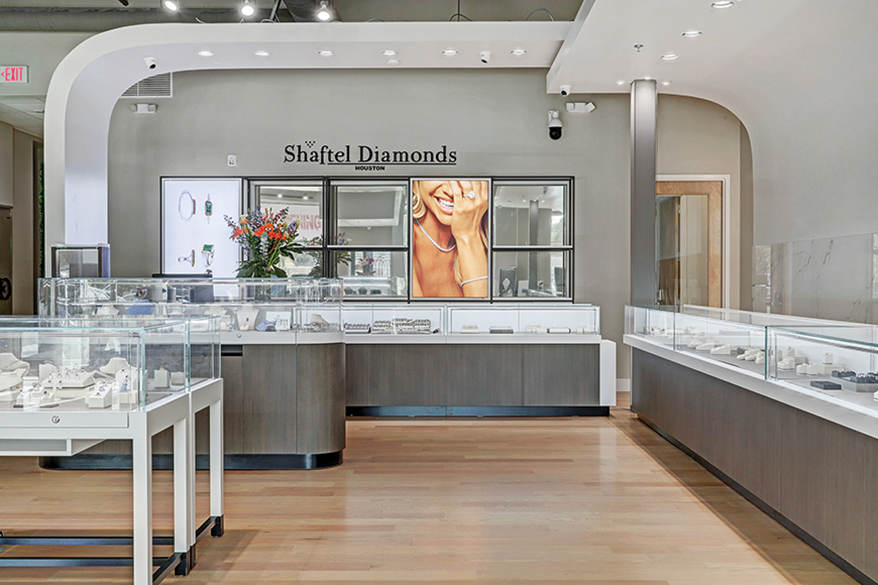
The Cocoon
Keith Shaftel, owner of Shaftel Diamonds in Houston, wanted a fun, unique and whimsical environment. “He shared images of curved doors and showcases with me from our first meeting,” says store designer Jesse Balaity, who introduced curves in the walls and ceilings, in addition to some of the showcases. “The idea was to create a sort of cocoon for the customers. The main ceiling is all exposed steel bar joists and ductwork, a rather industrial feel for a jewelry store. The curved walls and ceilings were intended to visually soften that cold metal look. The actual structure is simply metal studs and gypsum board, fabricated on site to the desired radius.”
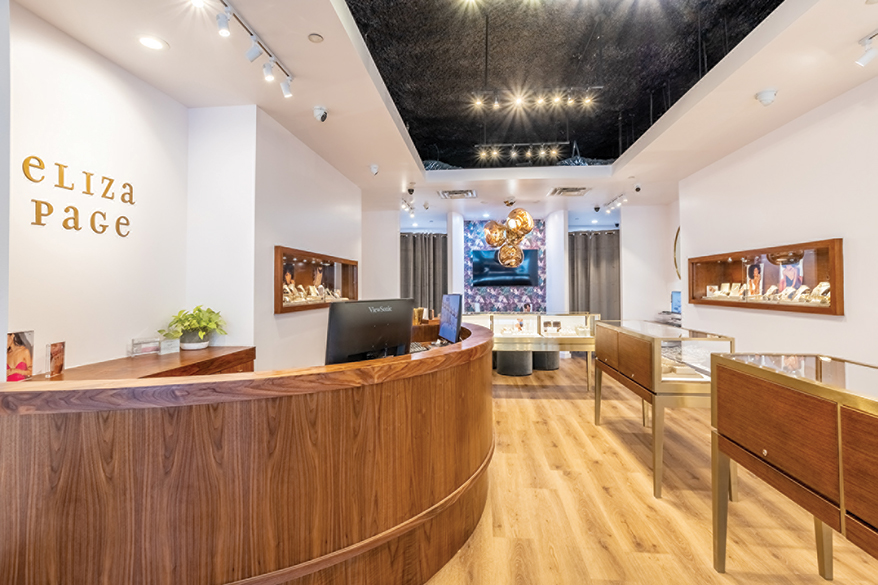
The Focal Point
The solid walnut POS counter, handmade by a local carpenter/millworker, creates a focal point at Eliza Page in Austin, while improving traffic flow and circulation in the 1,000 square-foot showroom. “We wanted to elevate the materials and the design to better fit the product we’re selling,” says owner Elizabeth Gibson, who recently renovated the space.
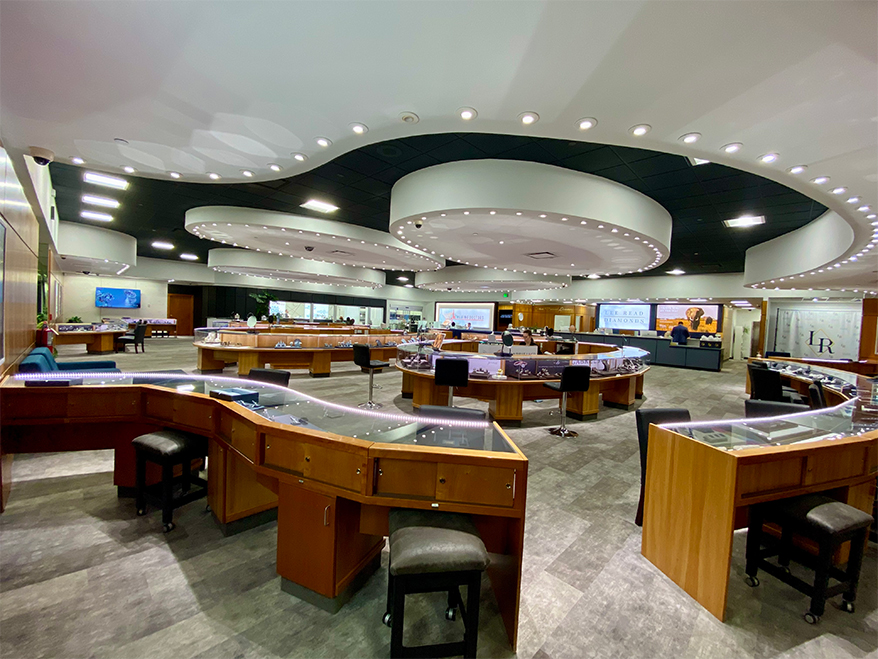
Traffic Flow
At Lee Read Diamonds in Boise, ID, owned by Larry Read, the dramatic ceiling design shadows the case design for a complete circular effect and an effective traffic flow. The Lee Read Diamond Dream Store was built in 2000 and the 10,000 square foot store was renovated in 2021.
Advertisement
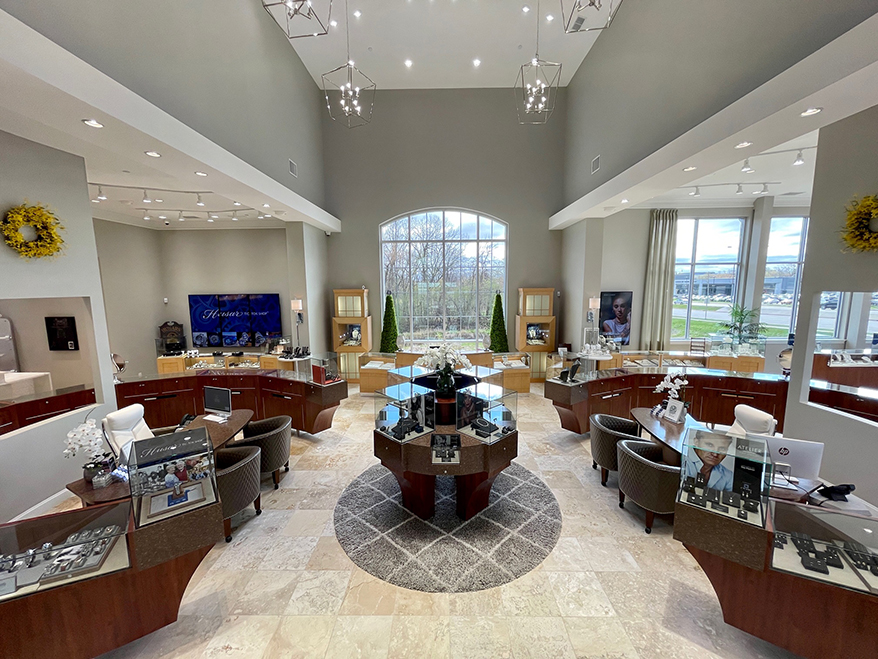
Down to Earth
In larger spaces, using bigger curves helps to create a cozy, warm and inviting atmosphere. At Craig Husar in Brookfield, WI, rounded shapes below contrast with strong lines above, serving to humanize the voluminous space.
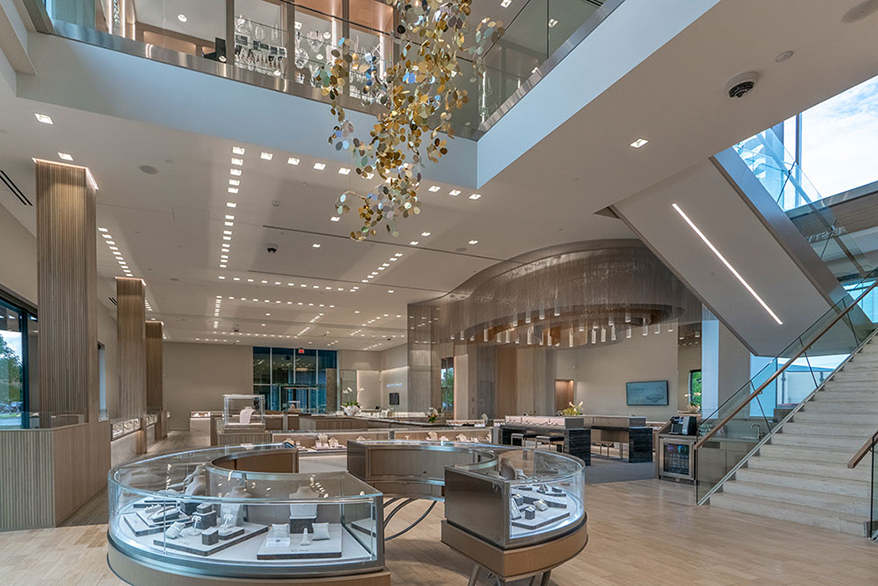
The Centerpiece
B.C. Clark is a study in contrasts with bold linear structures and soft, circular cases and lighting installations. Merchandise displayed in a circular case near the entrance of the Oklahoma City store represents a wide-ranging sample of what can be found in the store, with an emphasis on new arrivals. The store is owned by Coleman Clark, Mitchell Clark and their father, Jim Clark.
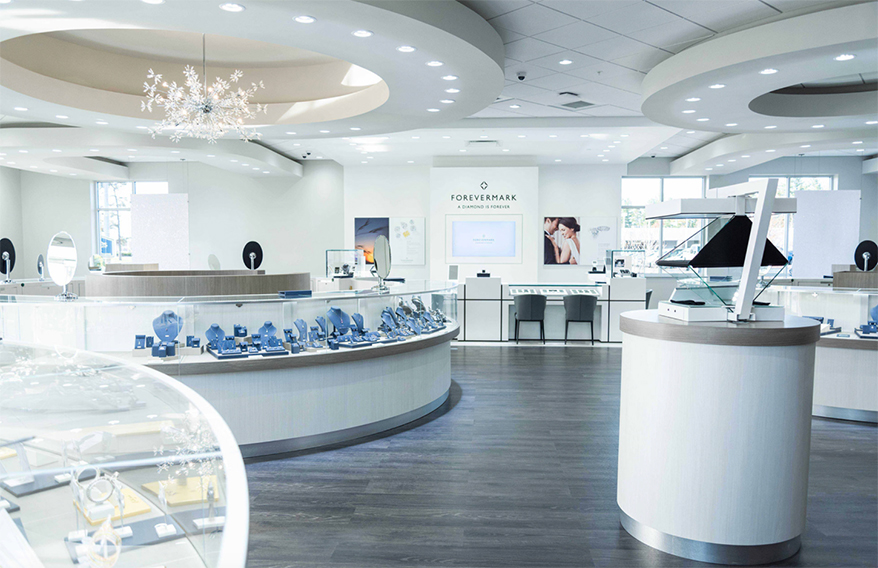
Curvaceous
Day’s Jewelers in Nashua, NH, is built on a curve, which is first established by a transparent glass wall along its curved exterior. The curved theme carries through to casework and ceiling, allowing a free-flowing circulation pattern that naturally draws patrons through the space while also maximizing linear display space. The circular design also creates an open lounge area in the center for customers to settle in, enjoy a beverage and watch TV.
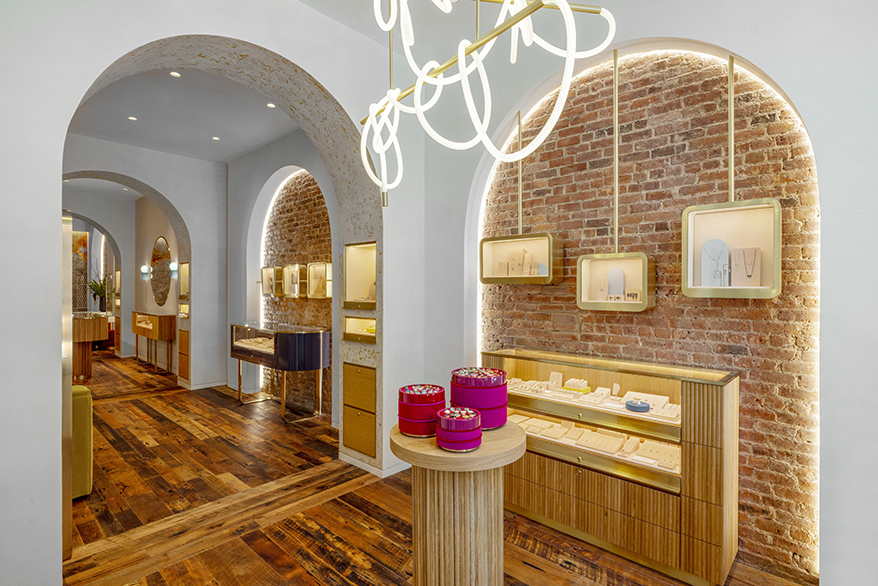
Arches
The design of Greenwich St. Jewelers in New York was based, in part, on an existing arch in the space. The arch theme was carried throughout the Tribeca store, owned by sisters Jennifer Gandia and Christina Gandia Gambale. They collaborated closely on the design with MAOarch, an architecture and planning firm in New York.

A Big Hug
When owner Julie Ettinger imagined her destination jewelry store, Ylang Ylang, in LaDue, MO, she always knew she wanted the cases to look as if they could reach out and embrace her customers. She opened her dream store in 2014 with that in mind. The architect designed the layout of the main 800-square-foot sales floor in the shape of a diamond. It’s outfitted with custom curved showcases, family heirloom chandeliers and curved crystal-embedded walls with touches of sparkling gold.
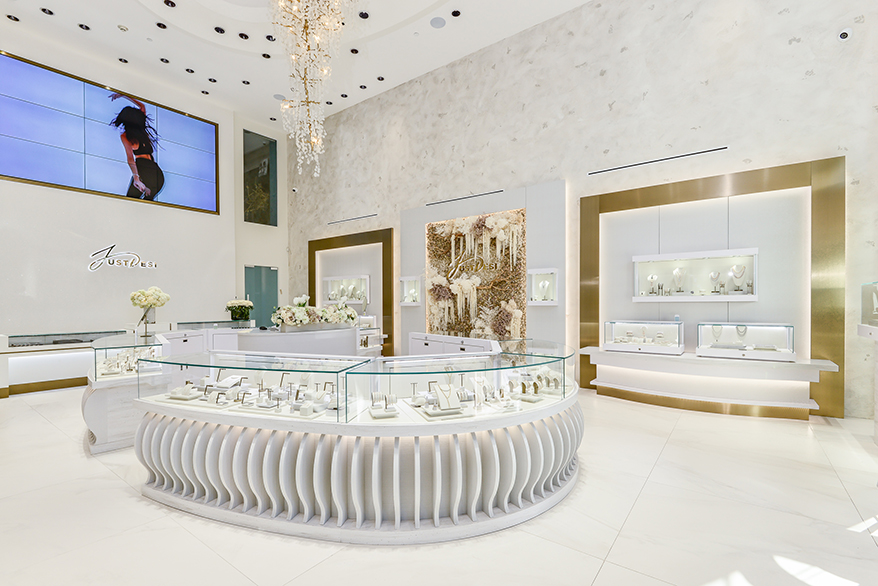
Edgy
JustDesi in Beverly Hills, owned by the Kraiem family, is the first retail project for residential interior designer Adeet Madan of Beverly Hills, who, inspired by wedding gowns and lace, came up with the concept for the distinctive, hand-crafted scalloped-edge showcases. The layout, open and engaging, invites shoppers to interact.
Advertisement